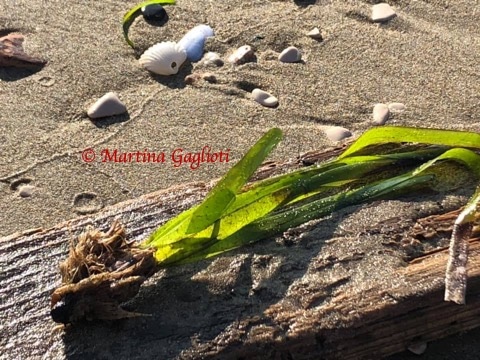How Deep is the Ocean?

For centuries, human beings have been fascinated by the ocean, exploring it and venturing towards the blue horizon in search of new worlds and adventures. We now know that the ocean makes up about 71% of the Earth’s surface. However, as much as we try to picture its vastness, it remains almost incomprehensible.
The five main ocean basins, the Pacific, Atlantic, Indian, Arctic and Southern Ocean basins hold 90% of all habitable space on the planet, making them the biggest ecosystem on Earth, They contain up to the 97% of all the water on our blue planet.
Much of this space, of course, is in its depths. But exactly how deep is the ocean?
In this article we will look at each one of the five ocean basins and find out their deepest point, average depth, and much more.
Ocean Depth
Humans have divided the so-called Global Ocean into five main basins for cultural, historical and geographical reasons. Each of these ocean basins have different physical, chemical, and geological features that make them unique and necessary for the ocean balance.
The estimate of the average depth of the ocean basins is 3,682 metres (12,080 feet). This was calculated, using satellite measurements, by scientists from NOAA and Woods Hole Oceanographic Institution. The latest measurements reveal that the seafloor is much more uneven and mountainous than previously thought, which resulted in an average ocean depth that is slightly lower than previously calculated. However, satellite data always has to be fine-tuned with high-resolution seafloor mapping, such as that conducted on NOAA Ship Okeanos Explorer. Currently, though, only 10% of the Earth’s seafloor has been mapped in high resolution, meaning that the estimates given are exactly that: just estimates.
? Curious facts!
- We know more about the surface of the Moon and about Mars than we do about the deep seafloor.
The Pacific Ocean basin
The Pacific Ocean basin is by far the largest and deepest ocean basin on the planet. It covers almost 30% of Earth’s surface and roughly 46% of the water surface, with 165,250,000 square km (63,800,000 sq. mi).
North to South, the Pacific Ocean basin stretches from the Bering Strait, where it connects to the Arctic Ocean basin, to the Southern Ocean basin. It is also connected to the Indian Ocean basin around Sumatra close to the Strait of Malacca and, in the East, to the Atlantic Ocean basin by the Strait of Magellan and the Drake Passage. Its greatest latitudinal extent is about 19,000 km (12,000 miles) between the coast of Colombia and the Malay Peninsula.
The average depth of the Pacific Ocean basin is 4,280 m (14,040 ft), and it contains the deepest known spot on the planet: Challenger Deep in the Mariana Trench, east of the Philippines, at 11,034 m (36,201 ft). An Oceanic Trench is a long and narrow topographic depression of the ocean floor that is usually found at the convergence of plate tectonics. The Mariana Trench’s length is more than 1,500 miles (2,550 kilometres) and it is 43 miles (69 kilometres) wide.
? Curious facts!
- Mount Everest would fit in the Challenger Deep with over a mile to spare!
- The world’s most active volcanoes are underwater and are all located in an area in the Pacific Ocean called the “Ring of Fire“.
The Atlantic Ocean basin
The Atlantic Ocean basin covers about one-fifth of Earth’s surface, coming right after the Pacific Ocean basin in terms of size, and it separates the continents of Africa and Europe from those of America.
The Atlantic Ocean basin was named after Atlas, a god from Greek mythology. This ocean basin has an “S” shape, long and narrow, and is traditionally separated into North and South Atlantic at the Equator.
The Arctic Ocean in the north and the Drake Passage in the south connect the Atlantic to the Pacific, while the Panama Canal provides another man-made link between the Atlantic and the Pacific Ocean Basin.
The Atlantic Ocean basin covers about 106,400,000 square kilometres (41,100,000 square miles) with its bordering seas, which is nearly 20% of the planet’s surface, and, without them, it measures about 81,760,000 square kilometres (31,568,000 sq mi).
If dependent seas are taken into account, the average depth of the Atlantic is 3,338 metres (10,932 feet); without them, it is slightly deeper at 3,926 metres (12,881 ft). The Puerto Rico Trench has the deepest spot at 8,605 metres (28,232 ft).
The Atlantic Ocean fluctuates greatly in width from north to south, ranging from 4,830 kilometres (3,000 miles) between North America and northern Africa to 2,848 kilometres (1,770 miles) between Brazil and Liberia.
? Curious facts!
- Beneath the Atlantic waters a range of mountains is formed, known as The Mid-Atlantic Ridge. These geological features can be seen with satellite imagery. The Mid-Atlantic Ridge is the longest mountain range on the planet, measuring four times the length of other major mountain ranges including the Andes and the Himalayas.
- The Atlantic Ocean basin is growing at a rate of five centimetres per year, as new seafloor is created by volcanic activity along its Mid-Atlantic Ridge. On the other hand, the much older Pacific Ocean basin is currently estimated to be shrinking by two to three centimetres each year.

The Indian Ocean basin
The Indian Ocean basin stretches from the east coast of Africa to the island of Tasmania.
It gets its name from India, and it differs from the Atlantic and Pacific in that it is landlocked in the Northern Hemisphere and does not reach Arctic waters, leaving it without a temperate-to-cold zone.
The Indian Ocean basin meets the Atlantic Ocean basin in the west at Cape Agulhas, Africa’s southernmost point, and its border extends along the 20° E meridian. Its eastern limits are less clear; they usually run from South East Cape, in the southern part of Tasmania, along the 147° E meridian, whereas the northern limit is usually set from Cape Londonderry in Australia, crossing the Timor Sea to the southern shores of Java, and then crossing the Sunda Strait to Sumatra. A line is drawn across the Singapore Strait as another of its limits.
The Indian Ocean basin, after the Pacific and Atlantic, is the world’s third-largest ocean basin, encompassing over 20% of the planet’s area. Its surface area is nearly 5.5 times that of the United States.
The Indian Ocean basin covers roughly 70,560,000 square kilometres without its peripheral seas (27,243,000 square mi). Covering almost 20% of the earth’s total surface. Between Western Australia and the Eastern coast of Africa, this body of water stretches for over 1,000 km (6,200 miles).
The average depth of the Indian Ocean is 3,741 metres (12,274 feet). Most of the Indian Ocean basin is at around 5000 m (16404 ft) deep, with others, like the Wharton Basin, reaching a depth of 6000 m (19685 ft). The Arabian Sea, with its 3000 m (9842 ft) depth, and the Bay of Bengal, which barely reaches 2000 m (6561 ft) at the south of Sri Lanka, are two examples.
The Java Trench, also known as the Sunda Trench, is located off the southern coast of the island of Java and has a depth of 7,450 m (24,442 ft) (Indonesia).
? Curious facts!
- The Indian Ocean basin bears many tectonic plate boundaries, including the Rodrigues Triple Point where African, Indo-Australian and Antarctic continental plates merge.
- Waters in the Indian Ocean basin have one of the lowest oxygen content of the world owing to greater evaporation rate in this ocean than its run off or precipitation influx. This makes life growth in the Indian Ocean basin rather unique.
- This ocean receives about 6000 km of river runoff from various parts including rivers like Ganges and Brahmaputra- two of the largest rivers. Due to the closeness to the equator, the evaporation rate here remains considerably high.
The Arctic Ocean basin
The Arctic Ocean basin is not just the world’s smallest (14,056,000 square kilometres) but also the coldest and shallowest ocean basin.
This body of water, largely north of the Arctic Circle, connects Europe, Asia, and North America. Although some water enters from the Pacific through the Bering Strait, the Norwegian Current from the Atlantic is the largest source of water.
The Arctic Ocean basin used to be completely covered in ice all year, but due to global warming, that is no longer the case. Salinity and subfreezing temperatures fluctuate when ice melts, affecting the entire globe. Except in its southernmost seas, marine life is thought to be limited in the frigid waters of the Arctic Ocean.
In Arctic waters, the deepest point discovered reaches 5,502 metres (18,050 feet), yet the average depth is just 987 m (3,240 ft).
? Curious facts!
- Due to large freshwater input and low evaporation rate, the Arctic Ocean basin has the lowest salinity level from all five ocean basins. Surface temperature reaches above freezing point -1.7°C (28.8°F).
- Changes in the seawater chemistry of the Arctic ocean basin, such as low salinity levels in seawater due to ice melting, could affect global ocean current patterns all around the planet, causing climate changes as well.

The Southern Ocean basin
The Southern Ocean basin is the fourth-largest ocean basin in the world, covering about one-sixteenth of the total ocean area. The International Hydrographic Organisation only acknowledged and accepted this Ocean in the year 2000. This is due to the fact that it encircles Antarctica and is made up of parts of the Atlantic, Indian, and Pacific Ocean basins that surround it.
The Drake Passage, which runs between South America and the tip of the Antarctic Peninsula, has its narrowest point, measuring around 1,000 kilometres (600 miles).
The Southern Ocean basin has a surface area of 21,960,000 km² (8,479,000 mi²) and a volume of 71,800,000 km³ (17,226,000 mi³). With an average depth of 3,270 m and a deepest point of 7,433.6 m, this ocean is primarily deep water.
?Curious facts!
- Antarctica and the Southern Ocean contain around 90% of the ice found on Earth.
- The deepest point of the Southern Ocean basin lies at a depth of 7,433.6 m (24,388 ft), Factorian Deep, and it is the only subzero Hadal zone in the world,
Resources
https://oceanservice.noaa.gov/facts/oceandepth.html
https://oceanexplorer.noaa.gov/facts/pacific-size.html
https://oceanexplorer.noaa.gov/facts/ocean-depth.html
https://www.marineinsight.com/know-more/11-not-so-known-facts-about-the-indian-ocean/
https://www.campliveoakfl.com/19-mind-blowing-facts-about-the-atlantic-ocean/
https://www.hydro-international.com/content/article/exploring-the-deepest-points-on-earth


